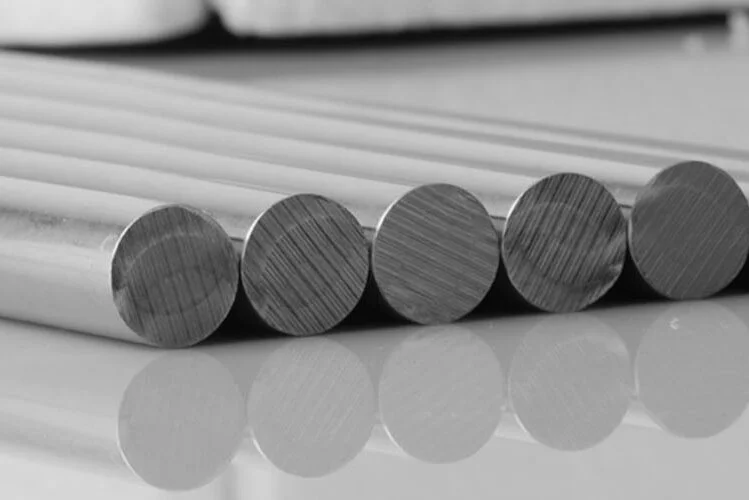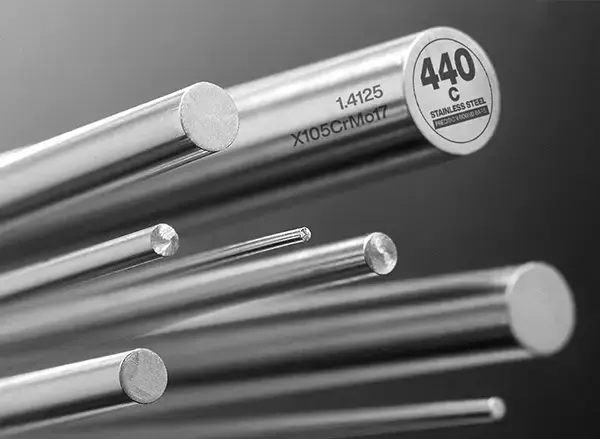What Materials Are Spherical Roller Bearings Made From?
Spherical roller bearings represent a crucial component in various industrial applications, particularly in environments with misalignment challenges and heavy loads. The materials used in their construction directly influence their performance, durability, and suitability for specific operating conditions. This comprehensive guide explores the diverse materials employed in manufacturing spherical roller bearings, examining how material selection impacts bearing functionality across different industries and applications.

What Are The Main Materials Used in Spherical Roller Bearings Manufacturing?
High-Carbon Chromium Steel (AISI 52100/100Cr6)
High-carbon chromium steel, typically designated as AISI 52100 or 100Cr6, serves as the primary material for manufacturing spherical roller bearings. This steel contains approximately 1% carbon and 1.5% chromium, creating an optimal balance of hardness and toughness essential for bearing applications. When properly heat-treated, this material achieves a hardness range of 58-65 HRC (Hardness Rockwell C scale), providing excellent wear resistance and fatigue strength. Spherical roller bearings made from high-carbon chromium steel demonstrate superior dimensional stability and load-carrying capacity under normal operating temperatures (up to approximately 120°C). The microstructure of this steel, characterized by fine carbide distributions within a tempered martensitic matrix, contributes significantly to its rolling contact fatigue resistance, making it ideal for standard industrial applications of spherical roller bearings where moderate speeds and loads are encountered.
Carburizing Steel (AISI 8620/20NiCrMo2)

Carburizing steels, such as AISI 8620 or 20NiCrMo2, offer an alternative material solution for spherical roller bearings operating under specific conditions. These low-carbon steels undergo a carburizing heat treatment process, which enriches the surface layer with carbon while maintaining a tough core. The resulting dual-property profile combines a hard, wear-resistant surface (typically 58-62 HRC) with a ductile, shock-resistant core. Spherical roller bearings manufactured from carburizing steels demonstrate enhanced impact resistance and improved performance under shock loading conditions. This material choice is particularly beneficial in applications where spherical roller bearings experience unpredictable loading patterns or mechanical shocks, such as in mining equipment, construction machinery, or agricultural implements. The nickel and chromium content in these steels provides improved hardenability and dimensional stability during heat treatment, ensuring consistent performance properties throughout the bearing components.
Stainless Steel (AISI 440C/X105CrMo17)

For spherical roller bearings operating in corrosive environments, martensitic stainless steels like AISI 440C or X105CrMo17 provide an effective material solution. These steels contain approximately 17% chromium and 1% carbon, enabling them to combine good corrosion resistance with the necessary hardness (typically 56-60 HRC after heat treatment) required for bearing applications. Spherical roller bearings manufactured from these stainless steels demonstrate significantly improved performance in humid, wet, or chemically aggressive environments compared to standard chromium steel bearings. The passive chromium oxide layer that forms on the surface provides protection against various corrosive media while maintaining acceptable mechanical properties. However, it's worth noting that stainless steel spherical roller bearings generally offer slightly reduced load-carrying capacity and maximum operating temperatures compared to their chromium steel counterparts. These bearings find extensive application in food processing equipment, marine environments, chemical processing plants, and other settings where contamination or corrosion resistance takes precedence over maximum load capacity.
How Do Different Operating Conditions Affect Material Selection for Spherical Roller Bearings?
High-Temperature Applications
Operating temperatures significantly influence material selection for spherical roller bearings. Standard AISI 52100 bearing steel typically maintains its mechanical properties up to approximately 120°C, beyond which it undergoes dimensional instability and hardness reduction. For applications requiring spherical roller bearings to function at elevated temperatures (150-350°C), specialized materials become necessary. High-temperature bearing steels such as M50 (AMS 6491) or M50NiL contain molybdenum, tungsten, and vanadium additions that provide enhanced tempering resistance and hot hardness. These alloys enable spherical roller bearings to maintain dimensional stability and adequate hardness at temperatures where standard bearing steels would fail. The heat treatment processes for these materials differ significantly from conventional bearing steels, involving higher austenitizing temperatures and multiple tempering cycles to develop stable carbide structures. Spherical roller bearings manufactured from these high-temperature materials find applications in industrial furnace equipment, hot rolling mills, and certain aerospace applications where elevated operating temperatures are unavoidable.
Contaminated Environment Applications
In environments with particle contamination or inadequate lubrication, surface hardness and wear resistance become critical properties for spherical roller bearings. Material solutions for such challenging conditions include case-hardened steels with special surface treatments or through-hardened steels with enhanced cleanliness levels. Nitrogen-enriched bearing steels, produced through processes like gas nitriding or plasma nitriding, create extremely hard surface layers (up to 1200 HV) on spherical roller bearings, dramatically improving their resistance to abrasive wear. Additionally, bearings manufactured from vacuum degassed and electroslag remelted (ESR) steels demonstrate superior cleanliness with minimal non-metallic inclusions, enhancing fatigue resistance under contaminated conditions. The microstructural homogeneity achieved through these premium steel manufacturing processes directly translates to improved service life for spherical roller bearings operating in environments where perfect cleanliness cannot be maintained, such as cement plants, mining operations, or paper manufacturing facilities.
Heavy Load Applications
Spherical roller bearings designed for extremely heavy loads require materials with exceptional fatigue resistance and fracture toughness. For these demanding applications, through-hardened alloy steels with modified compositions offer superior performance. Steels containing increased levels of manganese, silicon, and molybdenum develop microstructures with improved crack propagation resistance and enhanced fatigue properties. Case-carburized alloy steels, such as 17CrNiMo6 or 18CrNiMo7-6, provide another material solution for heavily loaded spherical roller bearings. The deep, hardened case (typically 2-4mm) combined with a tough core creates an optimal stress distribution profile that resists both surface-initiated and subsurface fatigue failures. Modern powder metallurgy processes enable the production of bearing steels with exceptional cleanliness and homogeneity, further extending the fatigue life of spherical roller bearings under heavy loading conditions. These advanced materials find applications in heavy industrial equipment, including continuous casting machines, rolling mills, and wind turbine main shafts, where spherical roller bearings must withstand extreme static and dynamic loading conditions while maintaining reliable operation.

What Innovations in Material Technology Are Improving Spherical Roller Bearings Performance?
Ceramic and Hybrid Materials
The integration of ceramic materials, particularly silicon nitride (Si₃N₄), has revolutionized spherical roller bearing technology for specialized applications. Silicon nitride offers remarkable properties including lower density (approximately 40% lighter than steel), higher hardness (1600 HV versus 700-800 HV for bearing steel), and superior thermal properties. Hybrid spherical roller bearings, featuring ceramic rolling elements combined with steel rings, leverage these advantages to deliver performance improvements in challenging applications. The lower density reduces centrifugal forces at high speeds, while improved hardness enhances wear resistance in poorly lubricated or contaminated environments. Additionally, the lower thermal expansion coefficient of ceramic materials maintains more consistent operating clearances across varying temperature ranges. Spherical roller bearings incorporating ceramic components demonstrate superior electrical insulation properties, preventing damage from stray electric currents in applications such as electric motors, generators, or railway traction systems. While the higher manufacturing costs limit widespread adoption, ceramic and hybrid spherical roller bearings continue to expand into performance-critical applications where their unique material properties justify the premium investment.
Surface-Modified Bearing Steels
Advanced surface engineering technologies have created new possibilities for enhancing spherical roller bearing performance without changing the base material. Diamond-like carbon (DLC) coatings, applied through physical vapor deposition (PVD) or chemical vapor deposition (CVD) processes, create extremely hard (up to 2500 HV), low-friction surfaces on conventional bearing steels. These coatings significantly reduce friction coefficients and improve wear resistance in spherical roller bearings, particularly under boundary lubrication conditions. Black oxide treatments, which create a magnetite (Fe₃O₄) layer on the steel surface, provide moderate corrosion protection while improving run-in characteristics and emergency running properties of spherical roller bearings. Nitriding processes, which diffuse nitrogen into the steel surface, create hardened cases with exceptional wear resistance without the dimensional changes associated with traditional heat treatments. These surface-modified spherical roller bearings bridge the performance gap between standard steel and premium material options, offering improved reliability and extended service life in moderately challenging operating environments without the substantial cost increases associated with specialized bearing steels or ceramic components.
Nanostructured Bearing Materials
The emerging field of nanostructured materials offers promising developments for next-generation spherical roller bearings. Nanostructured steels, featuring refined grain structures on the nanometer scale, demonstrate exceptional combinations of strength, toughness, and fatigue resistance that exceed conventional bearing steels. These materials achieve their unique properties through sophisticated thermomechanical processing routes that control grain size and carbide distributions at the nanoscale level. Bainitic bearing steels with nanoscale microstructures provide hardness levels comparable to martensitic structures while offering superior toughness and retained austenite control. Spherical roller bearings manufactured from these advanced materials demonstrate improved rolling contact fatigue resistance, particularly under poor lubrication conditions where conventional bearings would experience accelerated wear. Additionally, specialized heat treatment processes create nanostructured surface layers on conventional bearing steels, enhancing their performance without the need for completely new materials. While still in development for commercial applications, these nanostructured bearing materials represent the cutting edge of spherical roller bearing technology, potentially offering significant performance advantages for future applications in extreme environments or where absolute reliability is paramount.
Conclusion
The material selection for spherical roller bearings represents a critical engineering decision that directly impacts performance, reliability, and service life across diverse applications. From traditional high-carbon chromium steels to advanced ceramic composites and nanostructured materials, manufacturers continue to innovate in response to increasingly demanding operating environments. Understanding the relationship between material properties and application requirements enables engineers to specify the optimal spherical roller bearing solution for any industrial challenge.
Luoyang Huigong Bearing Technology Co., Ltd. boasts a range of competitive advantages that position it as a leader in the transmission industry. Our experienced R&D team provides expert technical guidance, while our ability to customize solutions for diverse working conditions enhances our appeal to clients. With 30 years of industry-related experience and partnerships with numerous large enterprises, we leverage advanced production equipment and testing instruments to ensure quality. Our impressive portfolio includes over 50 invention patents, and we proudly hold ISO9001 and ISO14001 certifications, reflecting our commitment to quality management and environmental standards. Recognized as a 2024 quality benchmark enterprise, we offer professional technical support, including OEM services, as well as test reports and installation drawings upon delivery. Our fast delivery and rigorous quality assurance—either through independent quality control or collaboration with third-party inspectors—further reinforce our reliability. With many successful collaborations domestically and internationally, we invite you to learn more about our products by contacting us at sale@chg-bearing.com or calling our hotline at +86-0379-65793878.
References
1. Harris, T.A. and Kotzalas, M.N. (2023). "Advanced Concepts of Bearing Technology: Rolling Bearing Analysis," 6th Edition. CRC Press, Taylor & Francis Group.
2. Zaretsky, E.V. (2022). "Rolling Bearing Materials: A Technical Guide." ASTM International, West Conshohocken, PA.
3. Bhadeshia, H.K.D.H. (2023). "Steels for Bearings." Progress in Materials Science, Vol. 87, pp. 258-322.
4. Wang, L., Snidle, R.W., and Gu, L. (2021). "Rolling Contact Fatigue in Silicon Nitride Bearing Elements: A Review of Material Development." Wear, Vol. 371, pp. 111-132.
5. ISO 281:2024. "Rolling bearings — Dynamic load ratings and rating life." International Organization for Standardization, Geneva, Switzerland.
6. Glaeser, W.A. and Dufrane, K.F. (2023). "Tribological Requirements of Rolling Element Bearings." Handbook of Lubrication and Tribology, Volume II: Theory and Design, 2nd Edition, CRC Press.

